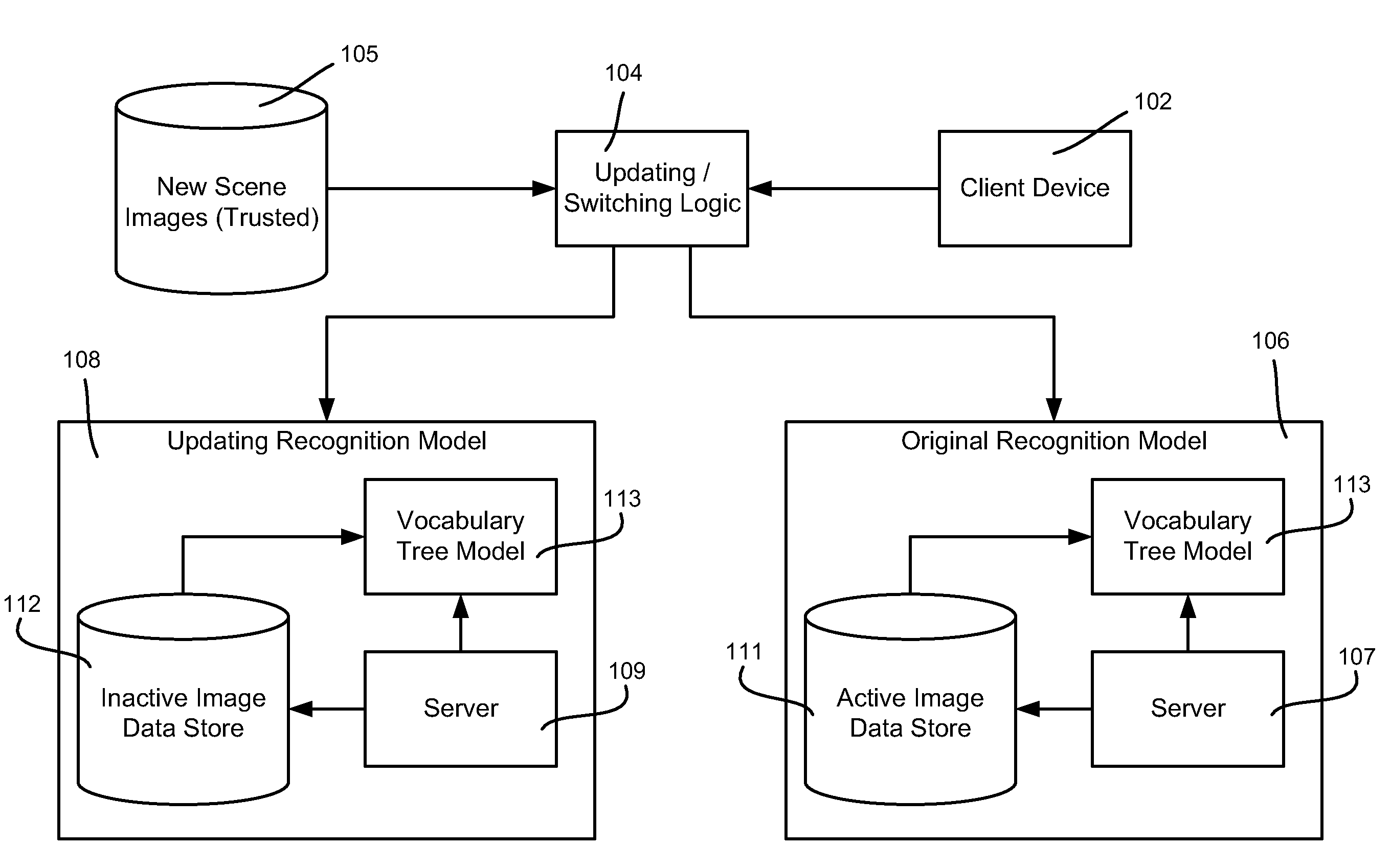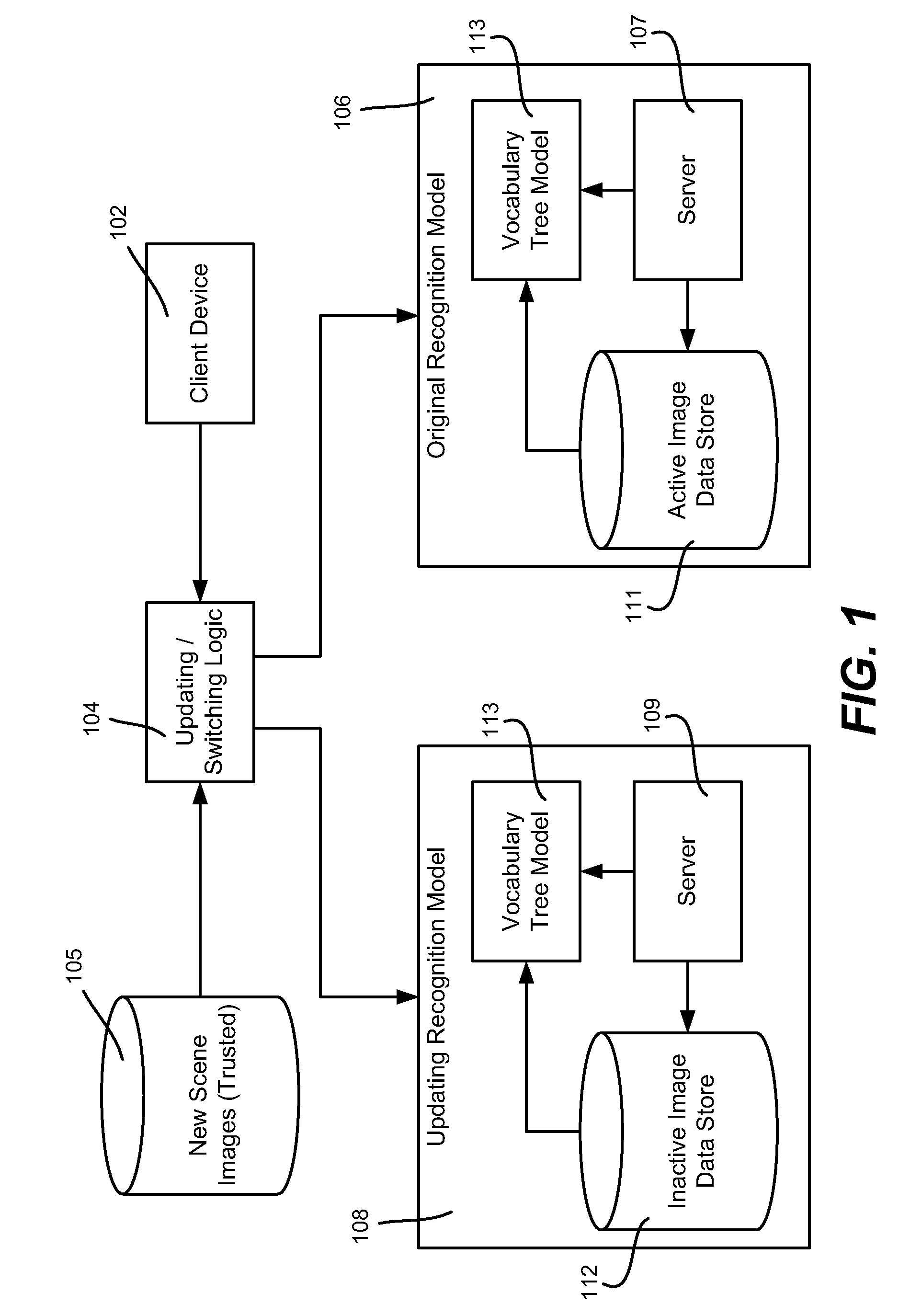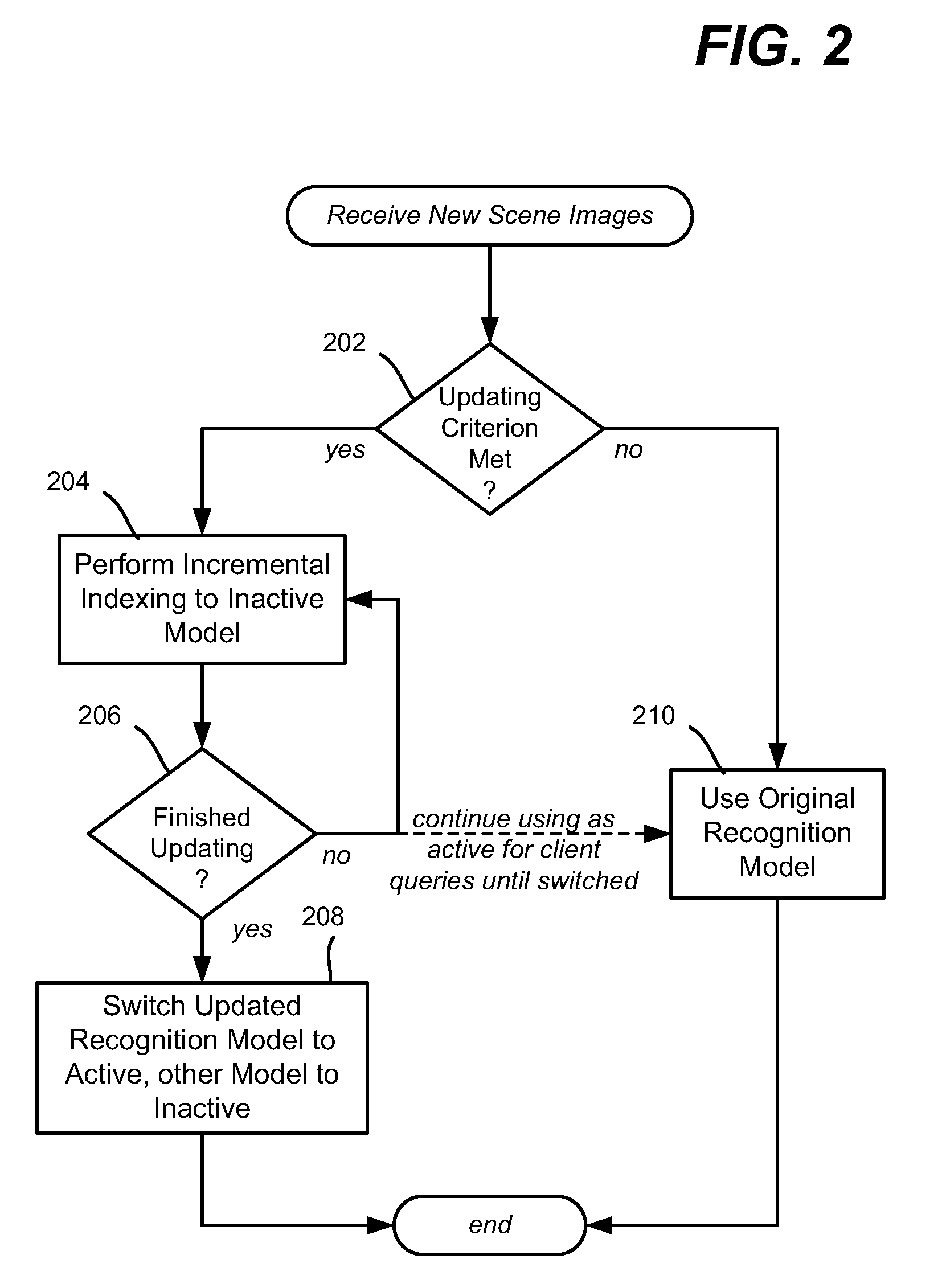Incremental feature indexing for scalable location recognition
- Summary
- Abstract
- Description
- Claims
- Application Information
AI Technical Summary
Benefits of technology
Problems solved by technology
Method used
Image
Examples
Embodiment Construction
[0014]Various aspects of the technology described herein are generally directed towards enabling a scene recognition system to be maintained in a scalable and incremental way. To this end, scene images from different sources, such as web search results and user query examples, are incrementally uploaded to extend the server's scene dataset. More particularly, described is a scalable vision-based location recognition system in which the backend database is updated incrementally. Further described is a trigger mechanism that determines when the incremental updating is to occur.
[0015]While some of the examples described herein are directed towards a particular vocabulary tree structure, it is understood that these are only examples. Other structures and scene recognition models may be used. As such, the present invention is not limited to any particular embodiments, aspects, concepts, structures, functionalities or examples described herein. Rather, any of the embodiments, aspects, con...
PUM
 Login to View More
Login to View More Abstract
Description
Claims
Application Information
 Login to View More
Login to View More - R&D
- Intellectual Property
- Life Sciences
- Materials
- Tech Scout
- Unparalleled Data Quality
- Higher Quality Content
- 60% Fewer Hallucinations
Browse by: Latest US Patents, China's latest patents, Technical Efficacy Thesaurus, Application Domain, Technology Topic, Popular Technical Reports.
© 2025 PatSnap. All rights reserved.Legal|Privacy policy|Modern Slavery Act Transparency Statement|Sitemap|About US| Contact US: help@patsnap.com



